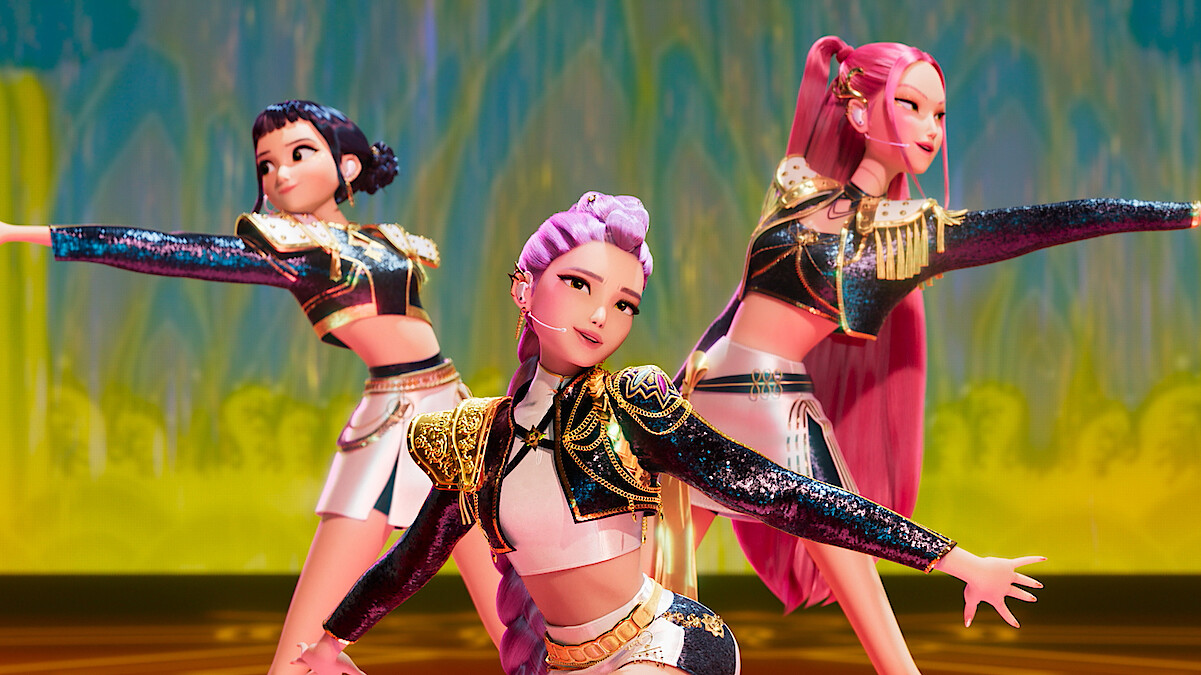Netflix hit the jackpot with this one. On June 20, KPop Demon Hunters quietly premiered on Netflix and unexpectedly became a global sensation. The animated film, developed and produced by Sony Pictures Animation, has surged to become the most-watched movie in Netflix history, accumulating over 236 million views.
When I first heard the film’s title, it seemed like Netflix’s wildest fantasy—as if they deliberately mixed popular viral keywords to craft an attractive name that would draw in audiences. After watching it out of sheer curiosity, I not only understood why it went viral but also saw the hidden controversies behind all the hype.
The film centers on the K-pop girl group Huntr/x. The three members—Rumi, Zoey, and Mira—are not only globally renowned K-pop idols but also demon hunters whose legacy spans generations. Huntr/x attracts fans through their music to gather energy that strengthens their magical barrier, preventing demons from devouring human souls. They also have to battle against a rival group, the Saja Boys, whose members are demons.
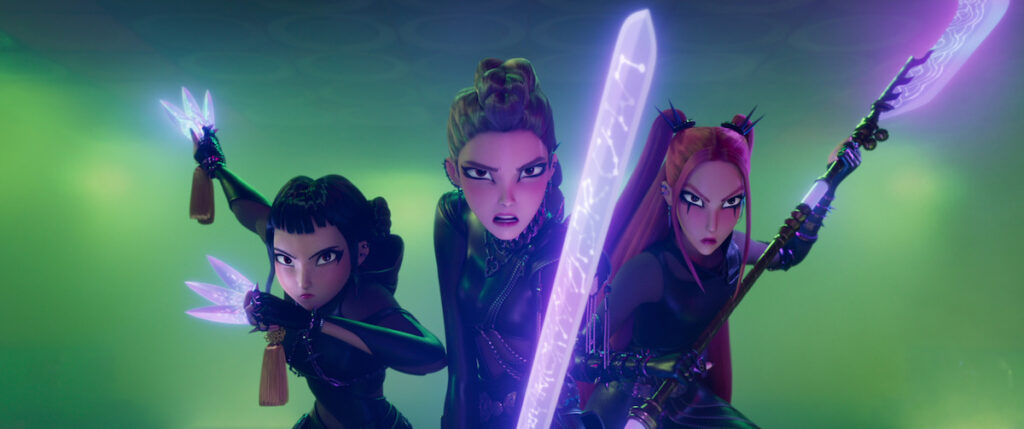
Top-tier K-pop Groups Losing to a Fictional Group?
Surprisingly, this virtual group that exists only in animated films has dominated major music platforms. Can you believe it? The fictional k-pop group Huntr/x has reached 50 million monthly listeners on Spotify, surpassing global superstars BLACKPINK’s 32 million and BTS’s 26 million to become the K-pop group with the highest monthly listeners on Spotify.
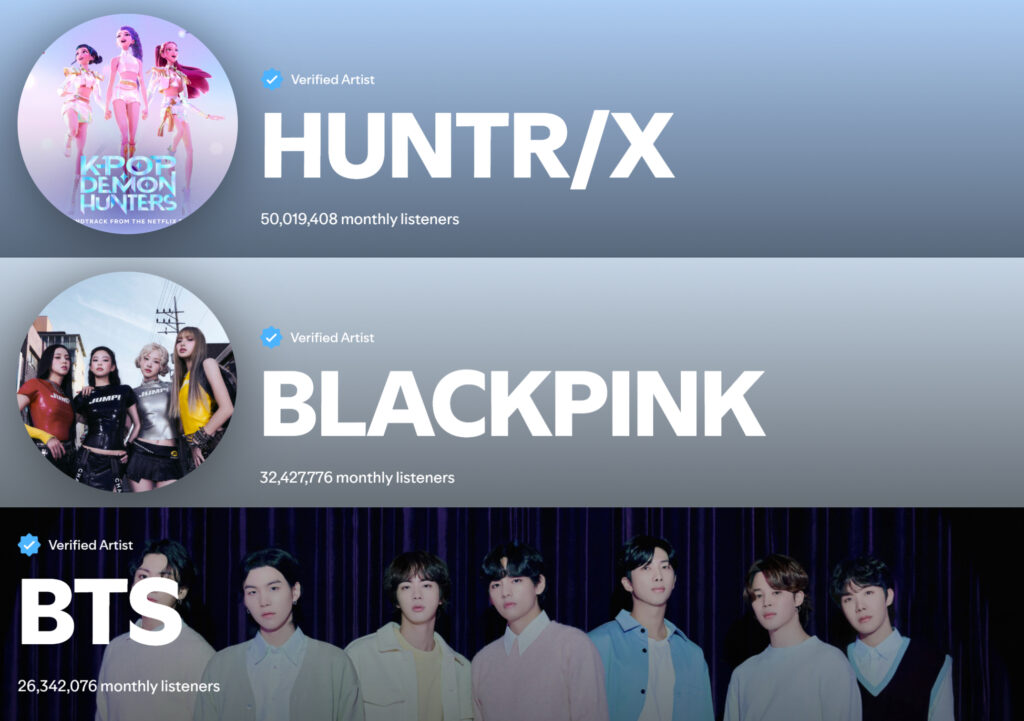
Moreover, the film’s lead single, “Golden” by Huntr/x, debuted with remarkable success, topping Spotify’s Weekly Hot Songs chart consecutively while simultaneously claiming the number one spot on the Billboard Hot 100 singles chart. It’s truly intriguing that this purely fictional group—without live performances or physical albums—could achieve such immense popularity solely through the film’s narrative and the appeal of its music.
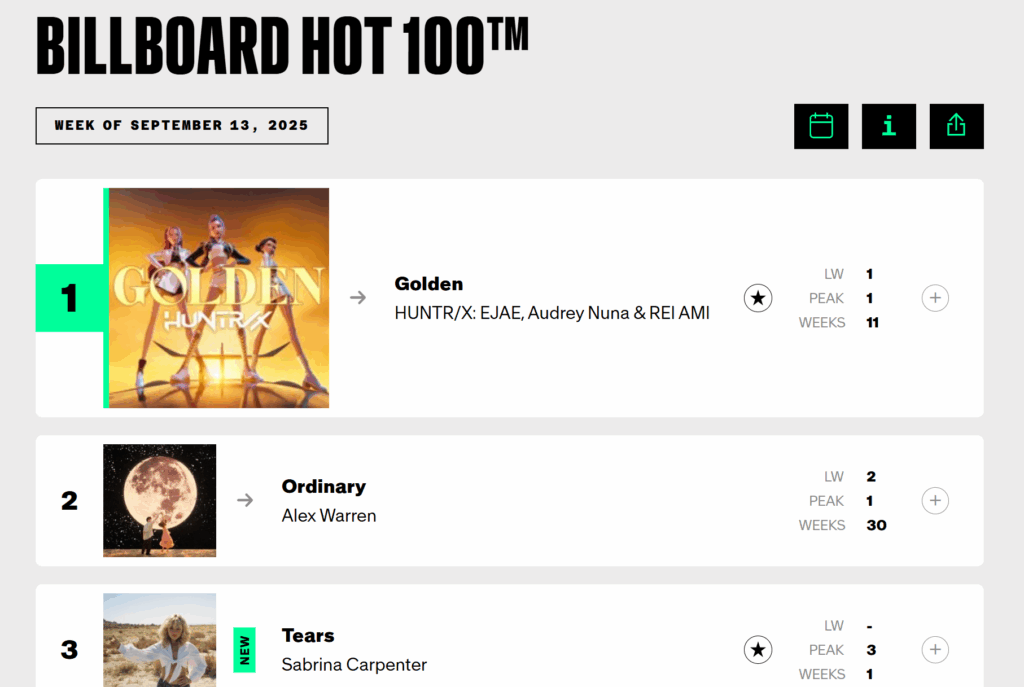
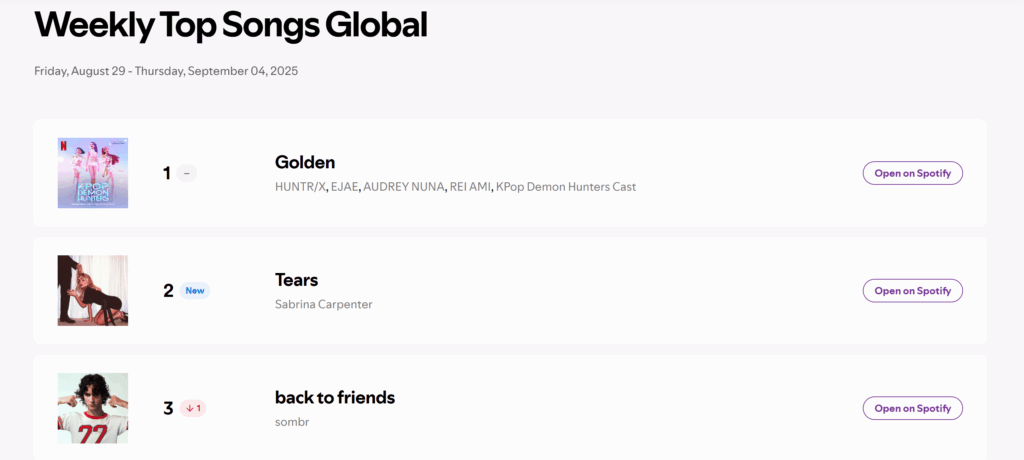
Why the Viral Success?
Actually, “demon-hunting” films are not uncommon in Western circles, so why did this movie unexpectedly go viral? Its ingenuity lies in breaking free from traditional Western animation formulas, seamlessly blending Korean idol culture with Hollywood genre films. In the film, Huntr/x shift between their identities as stage idols and demon hunters by using K-pop songs as weapons to eliminate evil. This approach flawlessly blends K-pop cultural elements while conforming to the familiar Hollywood template of saving the world.
Meanwhile, one of the protagonists, Rumi, undergoes a journey from hiding her half-demon, half-human identity and self-doubt to ultimately embracing it—a narrative arc mirroring the Hollywood hero’s journey of self-discovery. The story unfolds through an Asian female‘s perspective. On the surface, it presents K-pop girls’ fantastical attempt to save the world; however, underneath it operates at the intersection of hyper-realism and absurd fiction, creating a cross-cultural and cross-media platform for cultural export.
Beyond that, another reason for its instant sensation is the freshness K-pop brings to audiences. As a K-pop-themed film, the overall music not only permeates every scene but also serves as a pivotal plot driver. Within the movie, music functions as Huntr/x’s supernatural weapon in fighting against demonic forces. Additionally, with each signature song, the audience’s emotional intensity amplyfies.
Unlike the traditional Broadway musical formula prevalent in mainstream Western animated films, KPop Demons Hunters showcases its distinctiveness through elements of K-pop culture, such as boy and girl group showdowns, music videos, fan meetings, and fan light sticks.
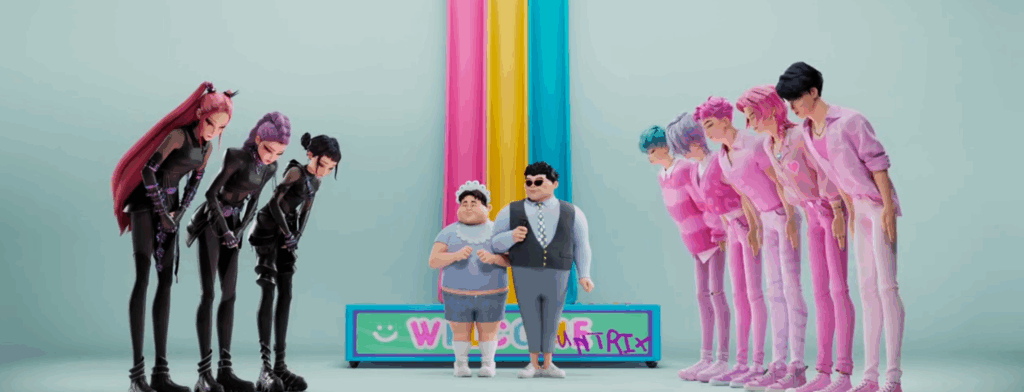
As its popularity increased, the KPop Demon Hunters craze spread beyond fans to permeate the K-pop ecosystem itself, drawing support from numerous active K-pop artists. For instance, EXO member Baekhyun covered the film’s theme song “Golden”. Additionally, official movie products began appearing. For example, Korean noodle company Nongshim launched official food items inspired by the animated film.
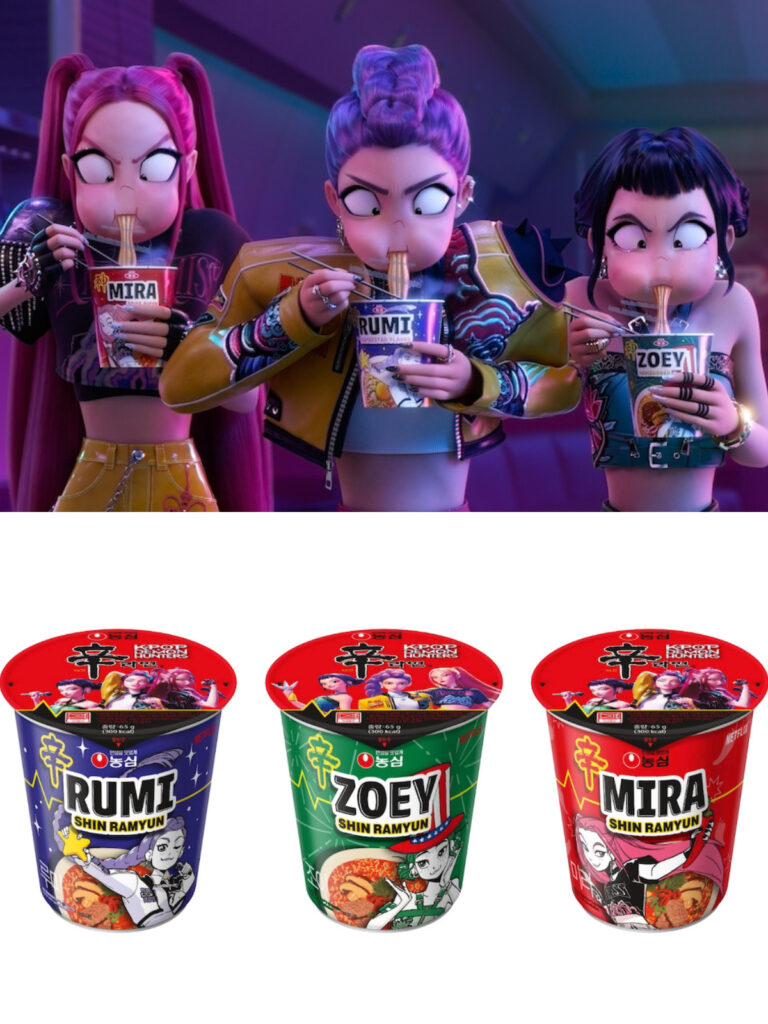
Controversies Behind the Viral Fame
It is undeniable that KPop Demon Hunters is truly a meticulously crafted pop entertainment product. But the surface perfection in pop culture is carefully created from what the film successfully embellishes or conceals. When we step back from the fast-paced music and dazzling animation effects, we find that the film’s plot moves at an absurdly rapid pace and is heavily filtered.
Firstly, the subplot involving the antagonistic Saja Boys feels incredibly underdeveloped. Five demons disguised as idols make their entrance with close-ups of abs and other signature boy band highlights. However, aside from leader Jinu, the other four seem like mere props—their names are forgettable, and throughout the film, they just stand around posing silently. Moreover, as a newly formed boy group, the Saja Boys supposedly achieved international stardom with a “Sodapop” hit, rivaling top international girl groups and amassing massive fanbases in record time—a development that defies the established norms of the K-pop industry.
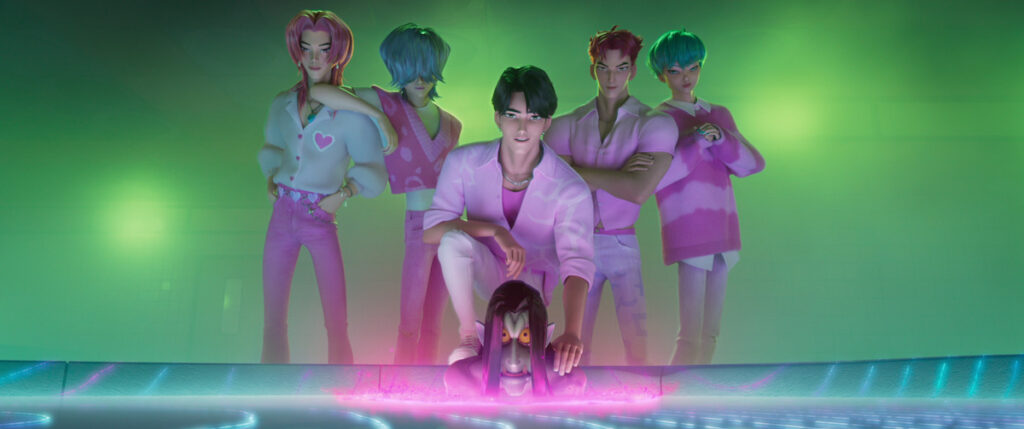
KPop Demon Hunters presents us with the ultimate utopia of the K-pop industry: three powerful, fiercely independent female idols wielding K-pop music as their weapon, winning the world’s adoration while saving it in the process. Yet behind them lies the globally dominating K-pop industry—a ruthless idol-manufacturing assembly line concealed beneath the film’s dazzling spotlight. According to the Guardian News, behind K-pop’s perfect smiles and dance routines lies immense pressure and sexism. Viewed this way, KPop Demon Hunters resembles a meticulously crafted fairy tale, picking the most dazzling elements of K-pop culture to convince them of the immense power attributed to K-pop in the film.
Undeniably, this cultural export is really powerful—but the story of flaws and filters makes this “Korean Wave culture” feel hollow and inauthentic.
